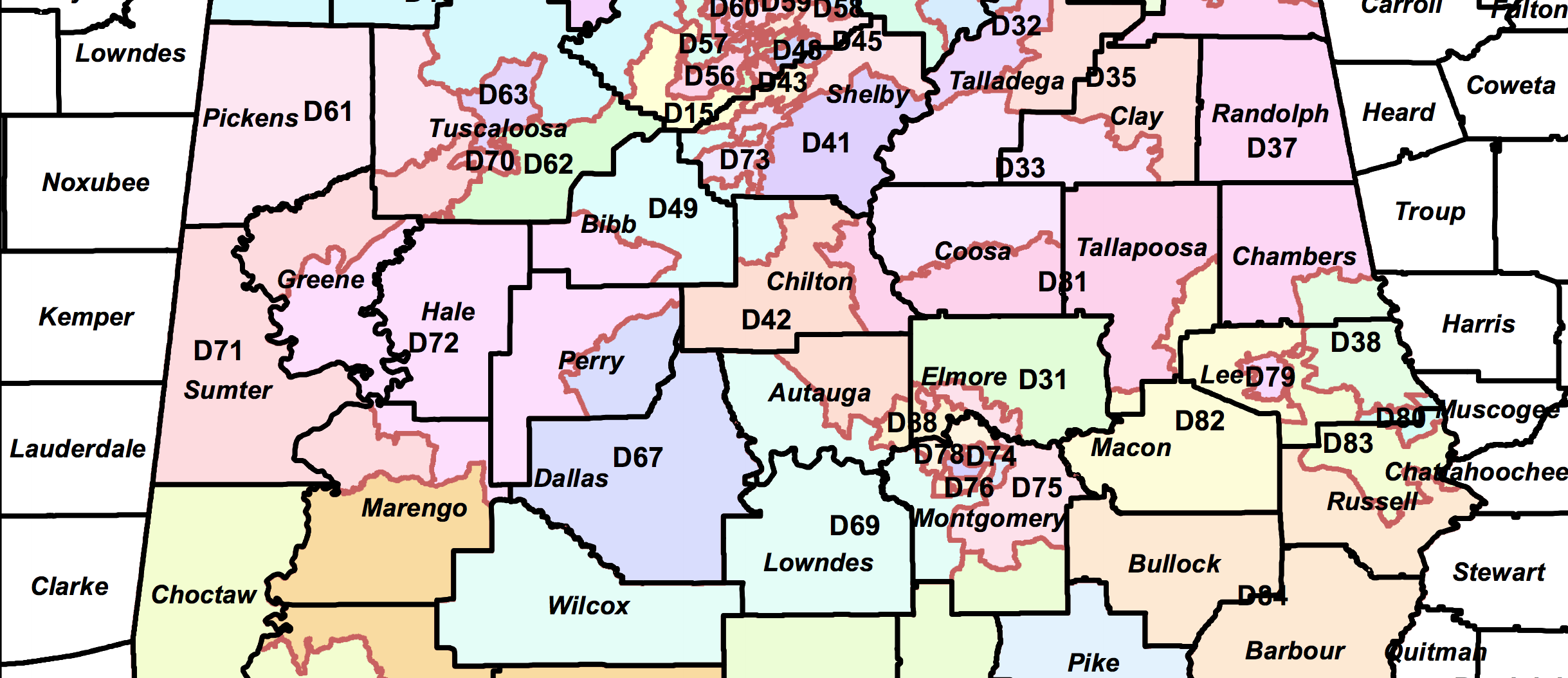By Chip Brownlee
Alabama Political Reporter
MONTGOMERY — More than 90 Legislative Districts could be realigned under the Senate Republicans’ current Reapportionment Plan, according to the top Republican on the committee handling the changes.
In an interview Thursday, Sen. Gerald Dial said as many as 66 Legislative House districts in Alabama and 25 Senate districts could be redrawn or tweaked as part of their plan that could be presented in a public hearing as soon as next week.
Most of the changes are minor, Dial said, but many of the realignments are intended to bring districts back in line with precinct and county lines when possible.
A Federal court decision earlier this year ruled 12 of Alabama’s Legislative Districts unconstitutional because the court found their alignment had been based improperly upon race. Three of the districts were Senate districts and nine were in the House.
The Alabama Legislative Black Caucus and the Alabama Democratic Conference originally sued the State over its new Legislative Districts back in 2012. The map was the first approved by a Republican supermajority sent to the Alabama Legislature since the Reconstruction Era. The plaintiffs said the State moved too many black voters, who tend elect Democrats, into too few districts.
Republicans said they made the changes to ensure that they could maintain minority population within largely minority districts — a requirement of the Federal Civil Rights Act.
A three-judge Federal court originally found the 2012 districts constitutional in a 2013 court ruling. But the US Supreme Court sent the ruling back down in March 2015, ordering the lower Federal court panel to reconsider their decision. In January, the panel found the 12 districts unconstitutional and ordered them redrawn before the next statewide election in 2018.
Most of the districts ruled unconstitutional were represented by Democrats, including House Minority Leader Anthony Daniels (D-Huntsville); Sen. Minority Leader Quinton Ross (D-Montgomery); and Rep. John Knight (D-Montgomery). The Legislature has so far agreed that they will have a plan to present to the court for approval by the end of the 2017 Legislative Session.
If the court approves the plan, which could go before the Permanent Committee on Reapportion as soon as next week, then Alabama will have new Legislative Districts for next year’s statewide election.
According to rules adopted by the committee in February, the committee agreed upon a goal of retaining counties and precincts as complete as possible, Dial said. The decision by the committee was predicated by the Supreme Court’s decision in another reapportionment case out of Virginia, Bethune-Hill v. Virginia State Board of Elections, which was starkly similar to Alabama’s situation.
The court found that Virginia improperly aligned their districts based on race as well, and ordered them to redraw them based on retaining the integrity of county and precinct lines. That means that the goal is no longer maintaining minority representation, Dial said.
“They were really adamant about splitting precincts and county lines when you don’t have to,” Dial said. “We integrated that decision to where we were. That’s why we expanded the number of counties that will be affected by the reapportionment.”
“We concentrated on putting precincts back together,” he said.
The Alabama Democrats filed their own plan to redraw districts in March. Their plan redrew a majority of the House’s districts and called for drawing more districts. Dial said Tuesday that the current his majority plan would not draw any new districts.
Dial said he was bringing House and Senate members to the Legislative Reapportionment Office to meet one-on-one to go over any changes to their districts. So far, he said, most were amenable to the changes, and he said he was working with Democrats to satisfy them as well.
“We don’t want them to be blindsided,” Dial said. “We want them to know what they’re losing and what they’re gaining.”
The plan would also protect incumbents in that it does not drastically change any districts to the extent that it would be a threat to their re-election, Dial said.
“We’re conscious of sitting Legislators,” Dial said. “I’ve had very little opposition to what we’ve done.”
After Dial finishes meeting with lawmakers through the rest of this week, the Senate plan could go before the committee next week. If it passes, it would head to the floor for a vote of the full chamber. Once passed by the Senate, the Senate map would head to the House for final approval. The House maps would start in the House and make their way to the Senate for final approval, Dial said.
Once approved by the Legislature, the plans would head for the Governor’s signature and would then be sent back to the three-judge Federal court panel for a final approval before being implemented for the 2018 elections.
- You can view the tentative plan for Senate districts here and House districts here. These maps have not been approved by the committee and are likely subject to change.
- You can view the 2014 Senate district maps here and House district maps here.
Email Chip Brownlee at [email protected] or follow him on Twitter.























































